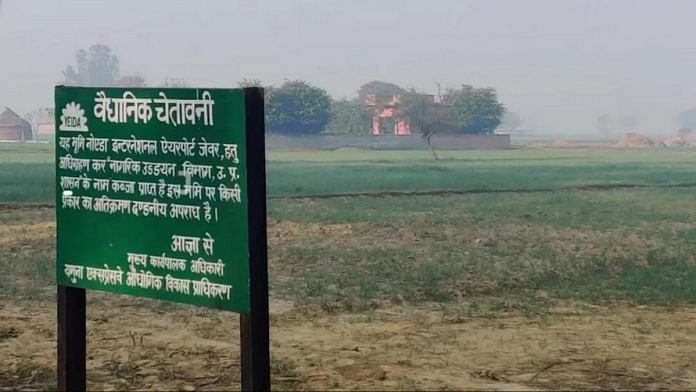New Delhi: Last week, Uttar Pradesh’s Revenue Code rules were updated to include a reform that will help check land fraud and ‘benami’ transactions.
The reform is a 16-digit unique code that identifies each and every agricultural plot in the state’s 1,08,868 villages. The code not only helps in identifying the owners of the nearly 7.5 crore agricultural plots, but can also be used to check their status — whether a plot is private or government land, and if it’s stuck in any dispute.
The task to update the Revenue Board’s records with the unique code began in 2018, and now, every detail, including ownership, has now been put online on the board’s website.
A similar exercise called ‘Gharouni’ is currently under way for identifying every rural residence as well.
Also read: Land reform a game-changer that Narendra Modi government has overlooked
What is the unique code?
The 16-digit code follows a clear system — the first six digits are the Census code of the village where a plot is situated, while the next four comprise the plot number, the four after that determine the division of land (that is, where the original land has been divided into different plots) and the last two digits identify the category (private or government).
Only UP has implemented such a unique code, and the Revenue Board’s Commissioner and Secretary Manisha Trighatia explained that the principle is similar to the Aadhaar project for people.
“Like Aadhaar helps identify every Indian citizen, the unique code helps identify every agricultural plot in the state. Anybody wanting to buy or sell agricultural plots in the state can now go online to the Revenue Board site and check the status of the land,” Trighatia told ThePrint.
Revenue officials say the impact of the implementation of the unique code is already visible — in 2019, the board stopped mutation of land in 2,058 cases where the deal was found to be fraudulent.
“These cases were in litigation in revenue courts for long. Through the unique code, we found that in many cases, the plot that was sold actually belonged to the government. In other cases, non-transferable land, which have been given on lease for a specified period, was sold before the lease ended,” Bhishm Lal Verma, Deputy Land Reform Commissioner, Revenue Board, told ThePrint.
Trighatia added that now that the exercise of assigning unique codes to plots is complete, “we have now incorporated it in the Uttar Pradesh Revenue Code rules”.
Rural residences
The Narendra Modi government at the Centre took a cue from UP’s unique code project and launched the SVAMITVA (Survey of Villages and Mapping with Improvised Technology in Village Areas) Yojana in April 2020 to identify each and every owner of a rural house in the country.
Uttar Pradesh, naturally, has taken the lead to implement this project, though the state still calls it ‘Gharouni’. “So far, unique identification code is being generated for every residence in 575 villages by 2023,” Verma said.
Besides UP, eight states — Punjab, Haryana, Uttarakhand, Madhya Pradesh, Rajasthan, Maharashtra, Karnataka and Andhra Pradesh — are implementing the scheme piloted by the Union Ministry of Panchayati Raj.
Under Gharouni, Verma said, a record of land ownership is being created for every rural house.
“It is the same issue in rural habitation too. People do not have papers to prove ownership of their land. This has resulted in fraudulent land deals and land disputes. Under Gharouni, every household will be mapped and given a property card carrying the unique identification number,” he said.
However, unlike the 16-digit unique code for agricultural plots, the code for rural houses will have 13 digits. A card carrying the number will be given to every owner.
“This will not only help prevent land fraud, but help in checking land disputes. Villagers can also avail loans by showing their land ownership card,” Verma added.
Also read: Let states do it — Modi govt could take same route for land reforms like it did for labour







Very good initiative by UP Government and Yogi Adityanath, Mr Shekhar Gupta please note
very good initiative, Mr Shekhar Gupta please give credit to UP CM Yogi Adityanath, earlier you and your team presented a grim picture of UP